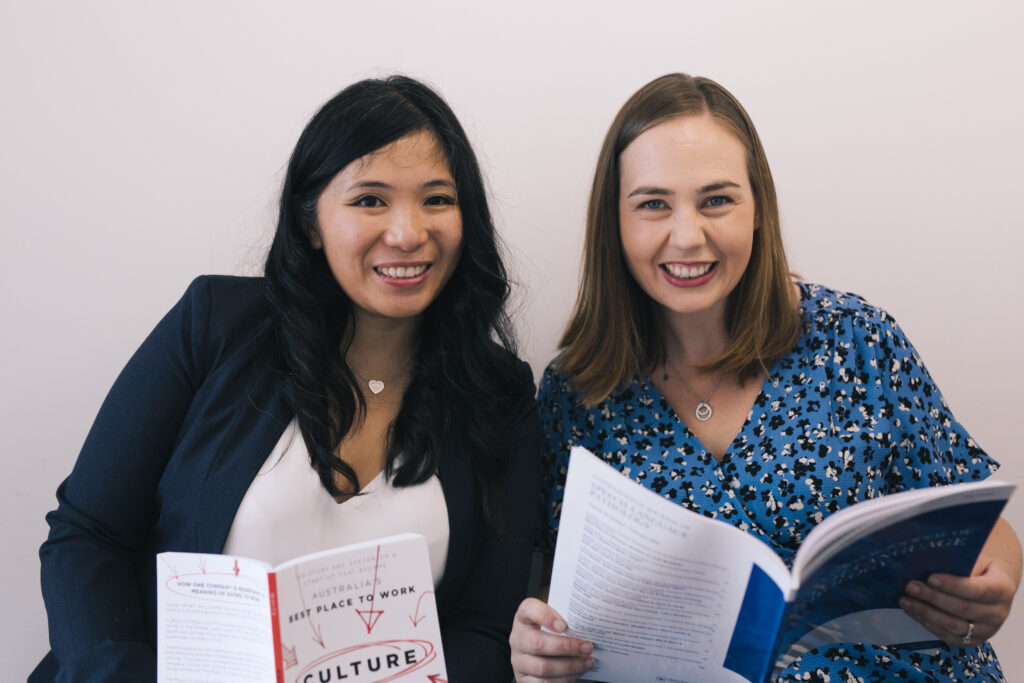Welcome to the first episode of our new vlog, Speechie Stories. Western Sydney Speech Pathology is excited to be launching this new way of communicating with our clients, speech pathology colleagues and broader health professional colleagues. This vlog will be a platform to discuss all things related to speech pathology.
We’re launching Speechie Stories during Speech Pathology Australia Week 2021 which runs from the 22nd – 28th August. This year’s theme is “Communication is everyone’s right”. One of the aims this year is to really deepen the conversation around communication disability. This is certainly something we believe in strongly here at WSSP. Conversation is a crucial way to bring about greater awareness of communication disability in our community. Awareness amongst the broader community means more chances that those with communication disability are identified, referred for services, and supported in their everyday lives.
Speechie Stories has been created by speech pathologists, Dr Rosie Hodges and Celine Lowe Pascual from Western Sydney Speech Pathology. Both have over 10 years experience as speech pathologists and are passionate about communication disability in children.
This episode introduces Caleb and his parents Jess and Micah. We tell their story from birth – 2 years old.
The Story
- Caleb was born to proud parents Jess and Micah. He was born full-term. The family settled into their home in Western Sydney.
- At 9 months, Caleb’s mum Jess began to notice how quiet Caleb was and that he wasn’t babbling as much as other babies
- By Caleb’s 1st birthday, he was walking and exploring his world, but was still very quiet – he hadn’t yet said his first words and he was having some trouble understanding language
- At 18 months, Caleb was using gestures and sounds to communicate, but no real words. He was starting to get frustrated, and Jess was getting worried
- When Caleb was 2-years-old, his parents Jess and Micah shared their concerns with their GP. The GP identified late talking and referred Caleb to a speech pathologist
- Jess and Caleb visited a speech pathologist, Kylie, for an assessment when Caleb was 2-years-old. She assessed Caleb through play, books, and parent interview. She identified that Caleb had speech and language difficulties characterised by difficulties with making sounds, expressing himself with words, and understanding language
- Kylie recommended starting speech therapy. Jess felt calmer and more motivated – she felt like she had a plan for helping Caleb
Key Information
Babbling: Between 6-12 months, babies should be frequently babbling in strings of repeated consonants and vowels like “baba” or “daba” (see Speech Pathology Australia Communication Milestones Kit). Babbling is predictive of later vocabulary (McGillion et al., 2017). Less babbling during infancy has been associated with later communication disability (Highman et al., 2008; Lang et al., 2019).
First words: Around their first birthday, most children can say a few words, alongside lots of babbling. By 18 months, they should have around 6-20 words and be trying to copy words (see Speech Pathology Australia Communication Milestones Kit).
Understanding Language: Between their 1st and 2nd birthdays, toddlers should be showing that they are starting to understand language – following simple directions, identifying body parts, and answering simple questions (see Speech Pathology Australia Communication Milestones Kit).
Late Talking: By 2-years-old, we expect children to have at least 50 words, and be combining words into short sentences (see Speech Pathology Australia Communication Milestones Kit). Some children are not doing this, and they are called ‘late talkers’. Around 20% of 2-year-olds are late to talk (Zubrick et al., 2007). Late talking is a risk factor for persistent communication disability (Fisher, 2017; Hawa et al., 2014). Late talkers have been shown to have more severe tantrums compared to toddlers with typical communication development (Manning, et al., 2019) and mothers of late talkers report high rates of parental stress (Irwin et al., 2002).
Seeking Help: If your toddler is not understanding language or talking as much as expected, seek help by talking to your GP and/or a speech pathologist. A speech pathology assessment can help you work out what’s going on, and the speech pathologist can guide you regarding getting started with therapy.
Useful Links
Links:
Milestones used in this vlog are based on the Speech Pathology Australia Communication Milestones Kit which can be freely downloaded here: Communication Milestones A4 sheets (cld.bz)
To find a speech pathologist, use the Speech Pathology Australia Find A Speech Pathologist search:
Find a Speech Pathologist (speechpathologyaustralia.org.au)
About the authors

Celine and Rosie manage WSSP as its Team Leads. Celine, Practice Owner and Senior Speech Pathologist, Celine started working at WSSP in July 2011. Celine’s clinical practice ranges from supporting families with young children with language and speech delays, school readiness and early literacy. Celine’s experience is also in working with upper primary and high school reading comprehension and writing.
Rosie joined WSSP as a Senior Speech Pathologist in January 2021. She has 10 years clinical experience across a variety of sectors including private practice, school-based, and not-for-profit services. In 2016, she completed her PhD focused on early speech and language skills in late talking toddlers. Since then, she has continued to engage in research examining both developmental and acquired speech and language disorders in children.
Check out our other blog posts
References:
Irwin, J, Carter, A. & Briggs-Gowan, M. (2002). The social-emotional development of “late-talking” toddlers. Journal of the American Academy of Child and Adolescent Psychiatry. 41. 1324-32.
Fisher, E.L. (2017). A Systematic Review and Meta-Analysis of Predictors of Expressive-Language Outcomes Among Late Talkers. J Speech Lang Hear Res. 60, 2935-2948.
Hawa, V.V. & Spanoudis, G. (2014). Toddlers with delayed expressive language: An overview of the characteristics, risk factors and language outcomes. Researchers in Developmental Disabilities, 35, 400-407.
Highman, C., Hennessey, N., Sherwood, M. & Leitao, S. (2008). Retrospective parent report of early vocal behaviours in children with suspected Childhood Apraxia of Speech (sCAS). Child Language, Teaching & Therapy, 24, 285-306.
Lang, S., Bartl-Pokorny, K.D., Pokorny, F.B. et al. (2019). Canonical babbling: A marker for earlier identification of late detected developmental disorders? Curr Dev Disord Rep 6, 111–118.
Manning, B.L., Roberts, M.Y., Estabrook, R., Petitclerc, A., Burns, J.L., Briggs-Gowan, M., Wakschlag, L.S. & Norton, E.L. (2019). Relations between toddler expressive language and temper tantrums in a community sample. Journal of Applied Developmental Psychology, 65, 101070.
McGillion, M., Herbert, J.S., Pine, J., Vihman, M., dePaolis, R., Keren-Portnoy, T. & Matthews, D. (2017). What paves the way to conventional language? The predictive value of babble, pointing, and socioeconomic status. Child Dev. 88, 156-166.
Zubrick, S.R, Taylor, C.L, Rice, M.L & Slegers, D.W. (2007). Late language emergence at 24 months: an epidemiological study of prevalence, predictors, and covariates. J Speech Lang Hear Res. 50, 1562-1592.
